How To Avoid The Smelly Seaweed On Your Next Trip To The Mexican Caribbean
Planning a trip to Cancun or anywhere in the Mexican Caribbean is exciting. Whether you’re a beach bum or a Mayan ruin explorer, there’s so much to look forward to about your trip. But, if you’ve never been before, there might be an unknown natural factor that threatens to put a downer on your whole vacation.
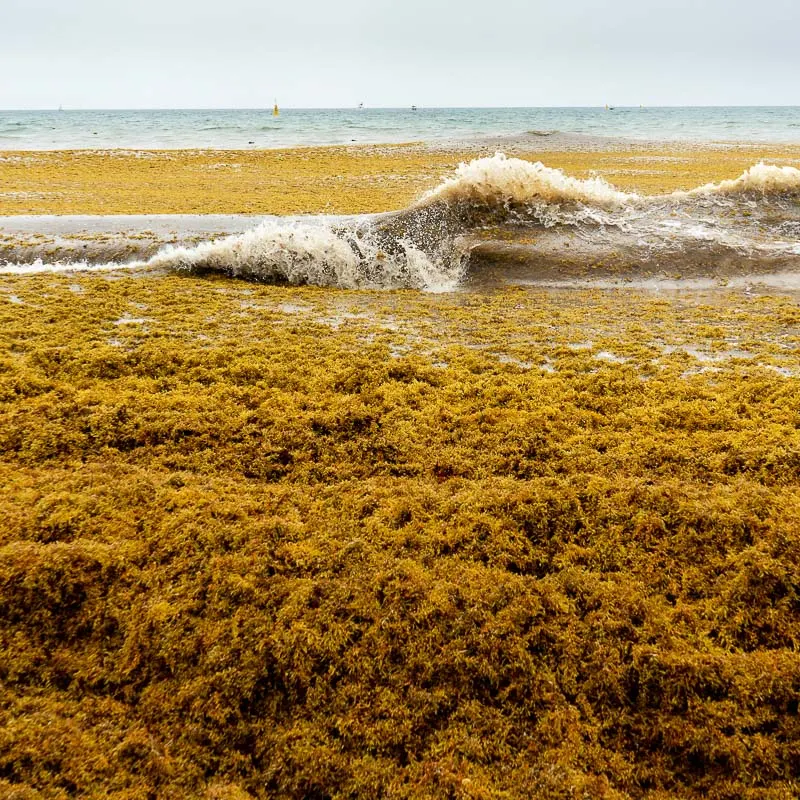
Sargassum seaweed is a natural phenomenon that plagues the Caribbean and some other areas across the world. The macroalgae is different from traditional seaweed in the way it grows and the impact it has on the coastline.
The seaweed forms miles out to sea, in the middle of the Atlantic Ocean, quickly expanding into huge masses that resemble small islands from above. Some of the largest knots of sargassum are as big as five kilometers long and drift Northwest along the coast of Brazil, where it’s then channeled through the Caribbean.
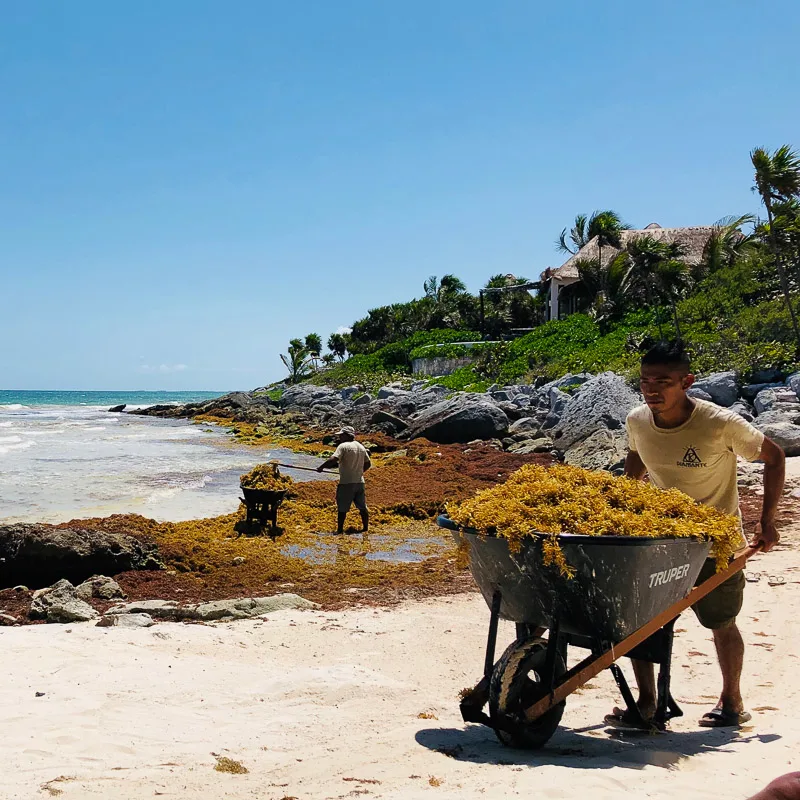
Cancun and the rest of coastal Quintana Roo are particularly affected by it thanks to the narrow channel between the mainland and the island of Cozumel, leaving beaches covered in the unsightly brown seaweed. Sadly, it’s not just the aesthetic of the beaches that are ruined. Sure, the typically white sands and crystal blue waters are tarnished, but the biggest issue lies in the putrid sulfur-like smell it emits as it starts to decompose on the beach.
Tourists flee the unpleasant smell, even in the height of some of the best weather the region has to offer, and local businesses spend hundreds of thousands on clearing their stretches of sand. Broader ideas, including a sixty-kilometer-long sargassum barrier, have also been suggested as a more definite solution to the problem that is only expected to get worse in the coming years.
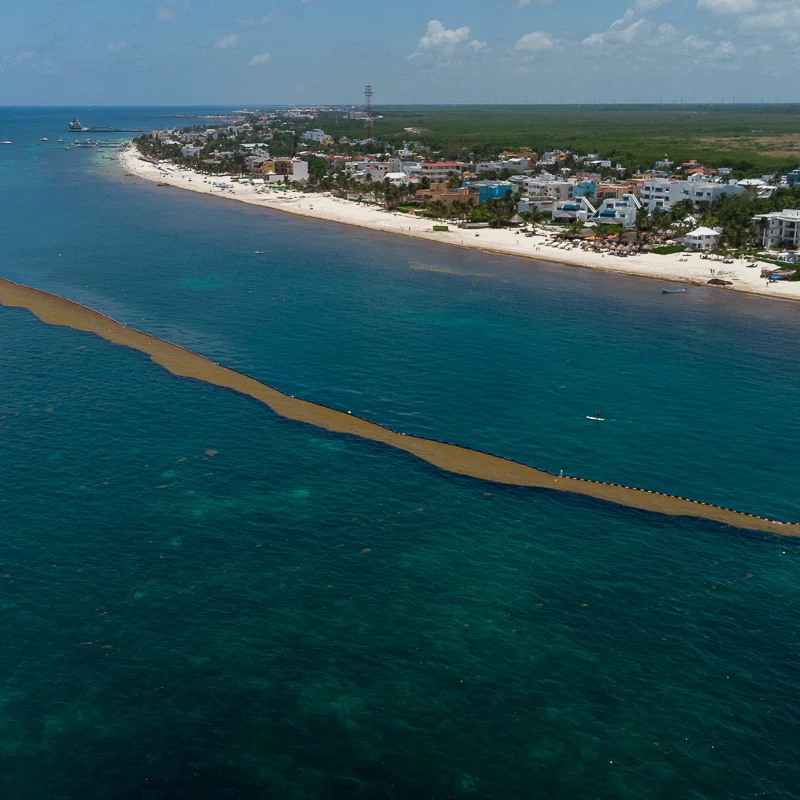
Its growth has been linked heavily to climate change, as the algae thrive in warmer water, as well as water pollution from Brazil’s questionable environmental practices. Either way, it poses a huge problem for Mexico’s tourist industry and the tourists themselves.
Luckily, the problem is seasonal, making it completely possible to avoid the seaweed altogether. Even if you choose to go during sargassum season, there’s a good chance you can find clear beaches if you know where to look.
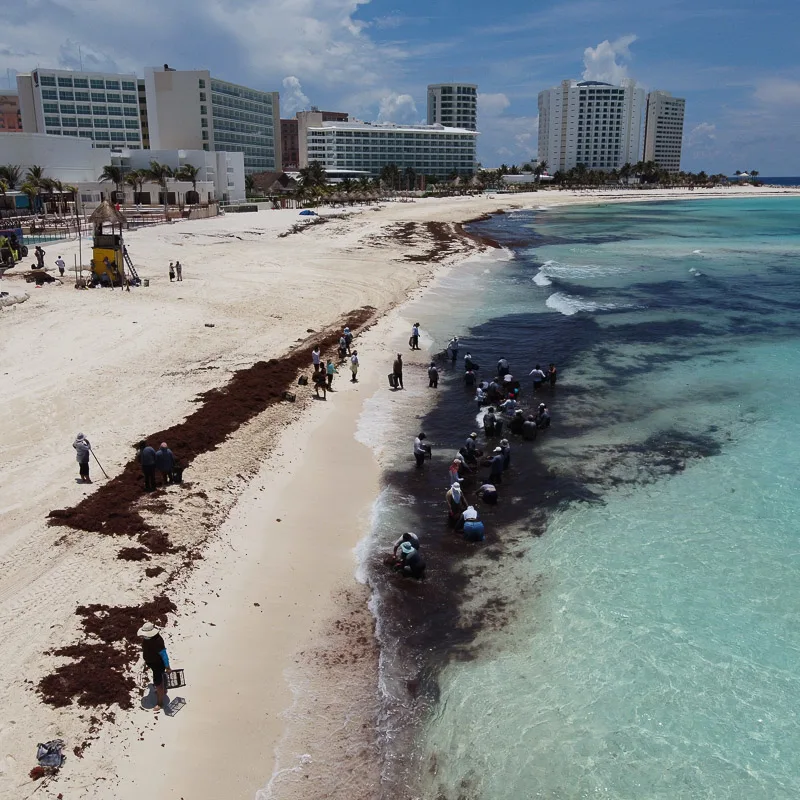
At the most basic level, the year is split into two seasons, one running from around the end of August until March, with the other filling in the remaining summer months. Sargassum is at its worst between April and August, peaking in July and August, although this year saw the seaweed arrive early, with some beaches being hit heavily in March.
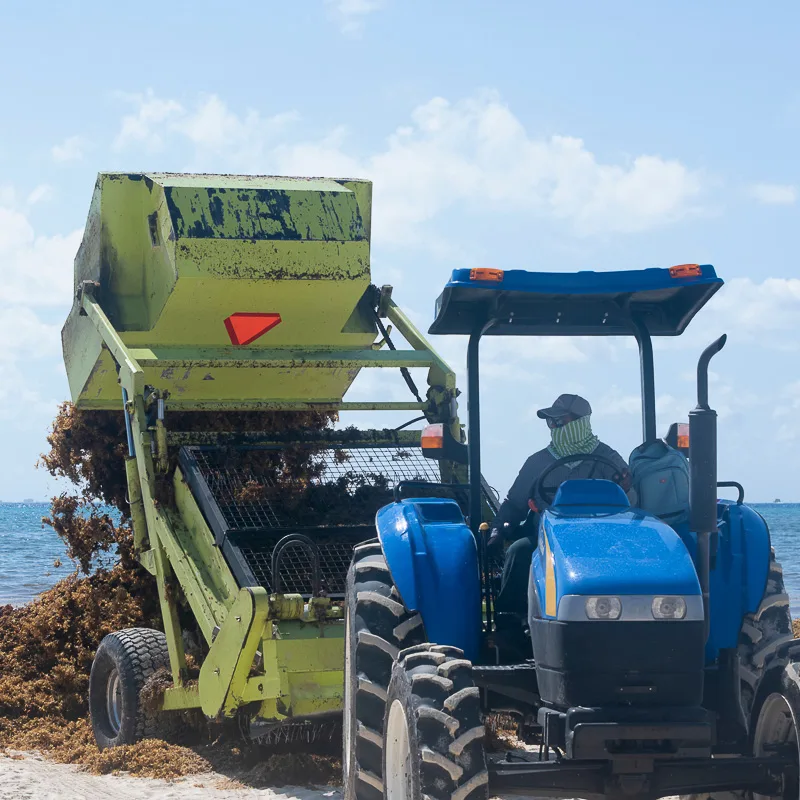
Of course, choosing to book a vacation after August means there’s an overlap with hurricane season until the end of November. While the chance of a hurricane hitting during your vacation could be very low, especially if you keep an eye on the weather, you are more likely to experience some rain during this time.
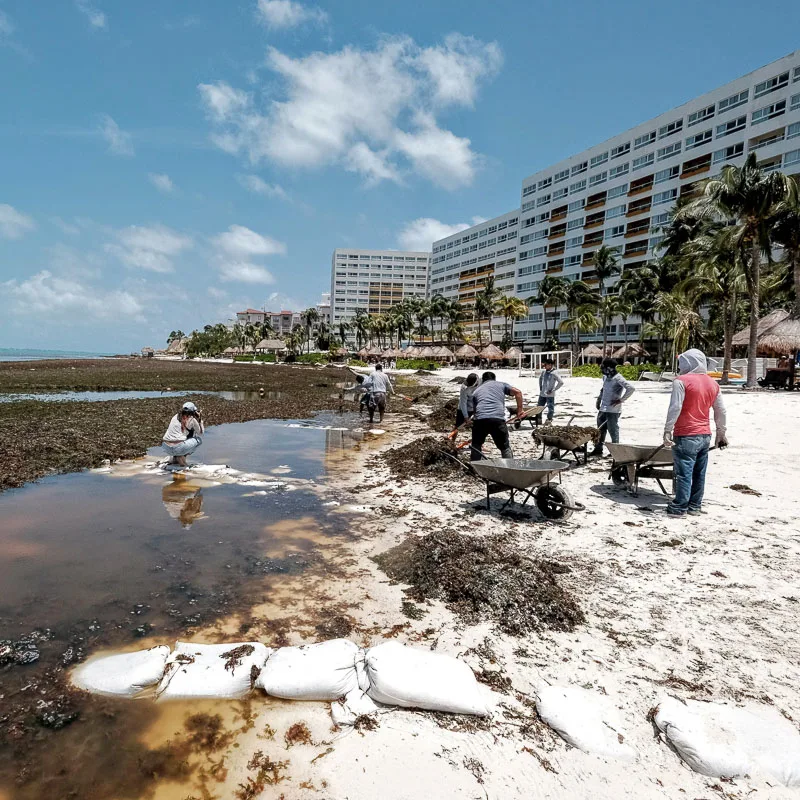
With that in mind, the best option would be a winter getaway. December and January are some of the most popular times for a visit to Cancun for a reason. Wonderful weather, but not too hot, the least amount of sargassum, and less rain after the rainy season leaves. To help avoid crowds, try going on the shoulder of popular holidays. Just before Christmas but not during it, or a few days after New Year when those crowds start to disperse.
Of course, sometimes it’s not possible, and a summer trip might be all you’re left with. Don’t despair if you do visit during sargassum season. There’s not always sargassum on the beaches, and choosing the right hotel can go a long way to help lessen any effects it will have.
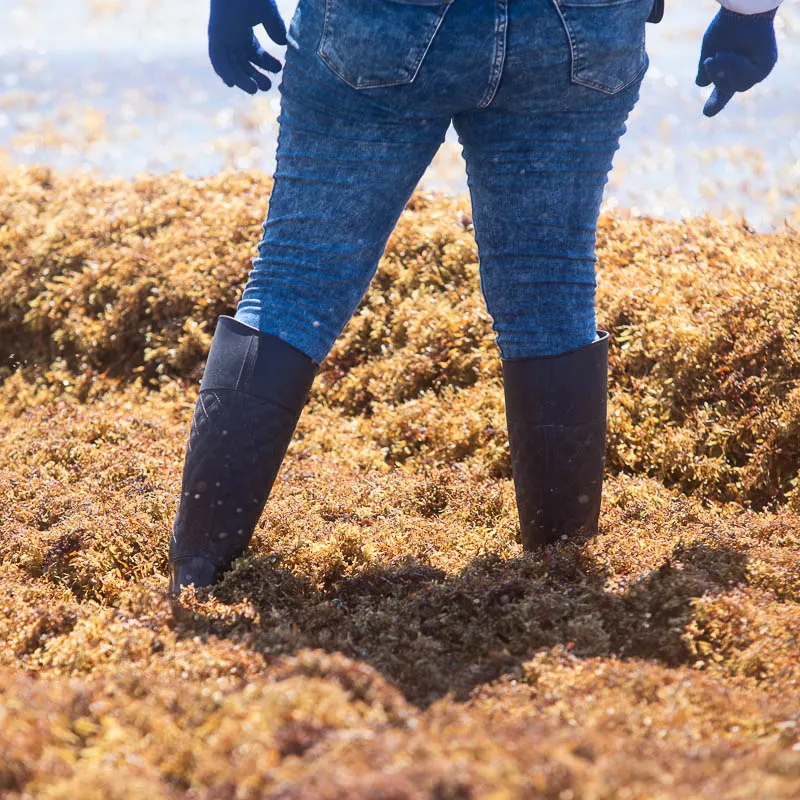
Many hotels now offer daily updates on the sargassum levels, letting you know which beaches have high levels, which are clear, and if any more is coming. You can expect these hotels to be on top of their clearance efforts long before you wake up to head to the beach, allowing you to enjoy your day. And of course, if you do get hit with the sargassum, there are still a lot of other ways to enjoy your vacation.
In short, winter getaways are your best bet for a sargassum-free vacation to the Mexican Caribbean.
Plan Your Next Cancun Vacation:
Traveler Alert: Don’t Forget Travel Insurance For Your Next Trip!
Choose From Thousands of Cancun and Riviera Maya Hotels, Resorts and Hostels with Free Cancellation On Most Properties
↓ Join the community ↓
The Cancun Sun Community FB group has all the latest travel news, conversations and tourism Q&A’s for the Mexican Caribbean

Subscribe to our Latest Posts
Enter your email address to subscribe to The Cancun Sun’s latest breaking news affecting travelers, straight to your inbox.

Bex
Friday 19th of August 2022
We visited in July 2022 for a week. The seaweed was there, but only mildly affected us when we went out snorkeling and had to walk over it. Otherwise we just enjoyed all the pools at our resort. There's plenty to do besides hanging out on the beach!